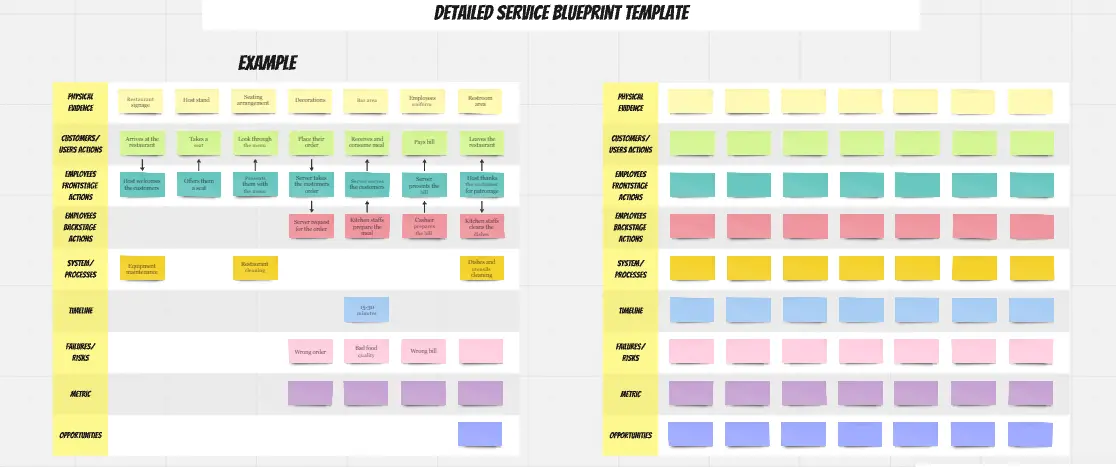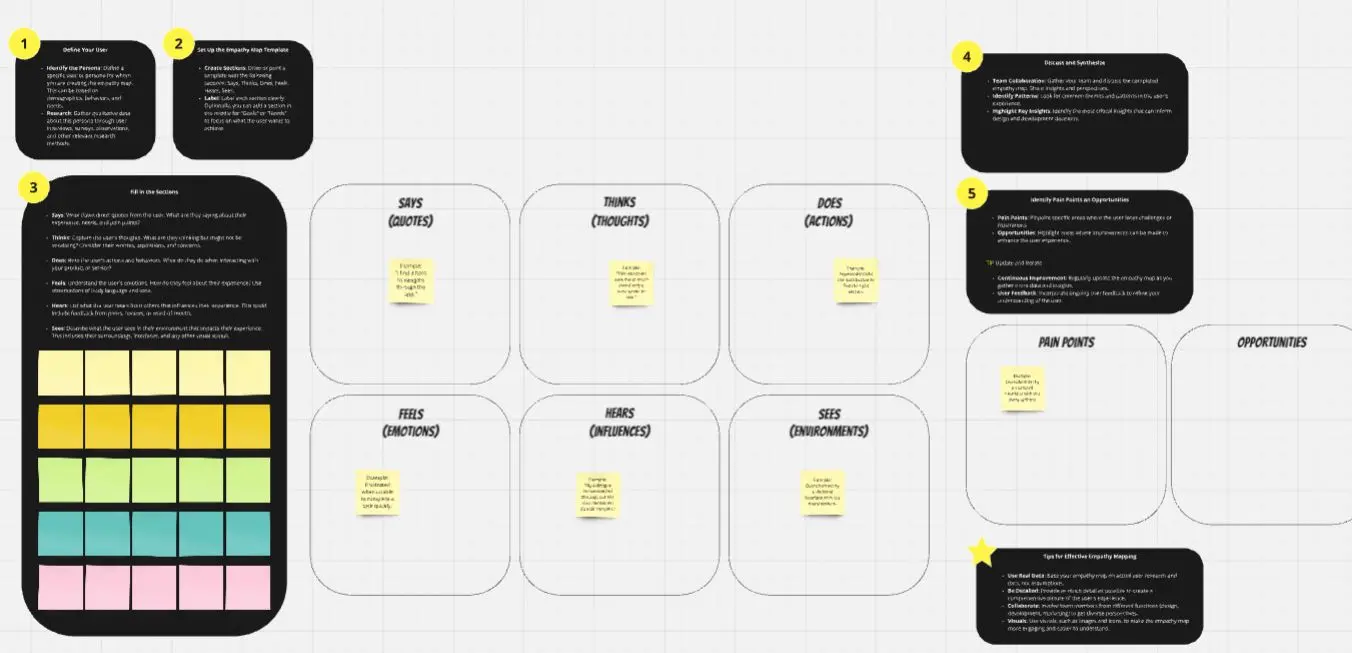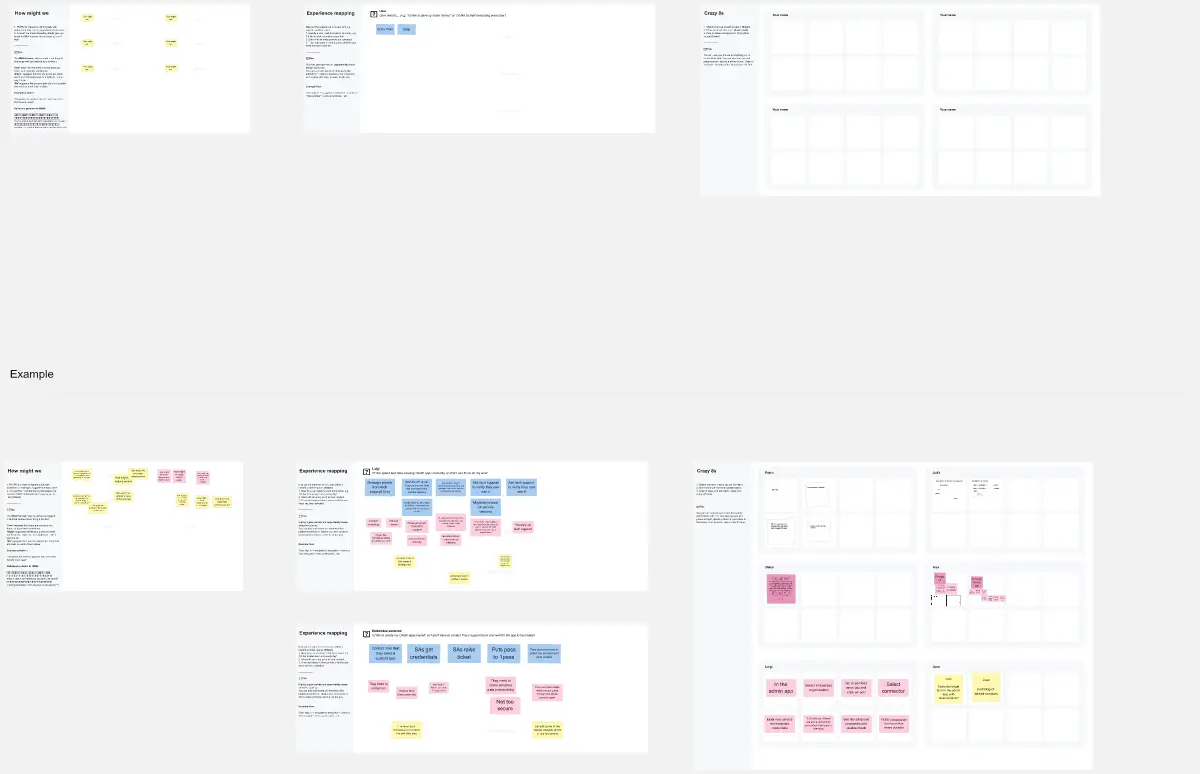Storyboard for User Experience
Title and Objective
Title: [Project Title]
Objective: [Clearly state the purpose and goal of the user experience storyboard.]
Key User Scenarios
For each scenario, include the following sub-sections:
Scenario Name: [e.g., First-time User Onboarding, Completing the First Task, Setting Up Notifications]
Resources:
Personnel: [List the roles needed]
Tools: [List the software and tools required]
User Data: [User personas, feedback data, etc.]
Time: [Estimated duration for this scenario]
Budget: [Estimated cost for this scenario]
Description: [Detailed explanation of the scenario and its importance]
User Journeys
For each scenario, map out the user journey:
Step 1: Step Name
Action: [What the user does]
Thoughts: [What the user is thinking]
Emotions: [What the user is feeling]
Description: [Why this step is important and any additional context]
Step 2: Step Name
Action: [What the user does]
Thoughts: [What the user is thinking]
Emotions: [What the user is feeling]
Description: [Why this step is important and any additional context]
Continue for each step in the user journey.
Visual Representations
Sketches: Simple hand-drawn sketches of each step in the user journey.
Wireframes: Detailed wireframes showing the app's interface at each step.
Flowcharts: Diagrams illustrating the user’s path through the app.
Detailed Descriptions
Scenario Descriptions: In-depth descriptions for each scenario, explaining the user’s actions, thoughts, and emotions, and why each step is important.
Justifications: Reasons for choosing specific steps and how they contribute to a positive user experience.
Review and Refinement
Review Checklist: A list of items to check for accuracy and completeness.
Feedback Section: Space for team members to provide feedback and suggestions.
Sharing and Collaboration
Sharing Tools: Methods for sharing the storyboard with the team, e.g., Google Slides, Miro.
Collaboration Tools: Tools for collaborative editing and discussion.
Why Use This Template?
Structured and Organized Approach: This template provides a clear and organized way to plan and visualize the user experience, ensuring all aspects are covered comprehensively.
Enhanced Communication: Visual elements and detailed descriptions help effectively communicate user journeys and scenarios to stakeholders, team members, and other departments.
Holistic View of User Experience: By mapping out user journeys and scenarios, the template ensures that every touchpoint, action, and emotion is considered, leading to a more thorough understanding of the user experience.
Focus on User-Centered Design: Emphasizes understanding the user's thoughts, actions, and emotions, which is crucial for creating intuitive and engaging user experiences.
Encourages Collaboration: The template fosters collaboration and feedback, leading to better ideas, more refined plans, and a sense of ownership among team members.
Identification of Pain Points and Opportunities: Helps identify potential pain points and opportunities for improvement in the user journey, leading to a more seamless and enjoyable user experience.
Resource Planning: By listing the necessary resources for each scenario, it ensures that all critical aspects are considered, preventing potential issues and delays during development.
Risk Management: Clearly defined steps and resources help identify risks early and create contingency plans, reducing the likelihood of project delays and cost overruns.
Using this template can lead to a more organized, user-centered, and successful user experience design process, providing a clear roadmap from initial user interactions to refined product experiences.
Categories
Similar templates





